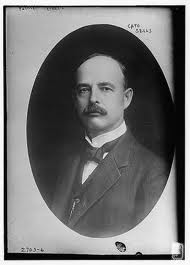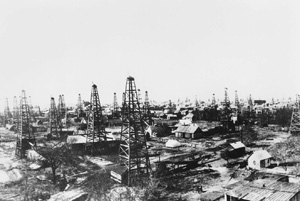The Bureau of Indian Affairs expanded over time, as many other government offices did. In its 1913 report to Congress, the Commissioner of Indian Affairs (Cato Sells) noted that the Indian Office had received 77,000 letters in 1902 and employed 132 people, but had received 209,000 letters and had employed 227 people by 1911. The commissioner presented his office in the most positive light as he highlighted the strides and failures of the past few years.
He specifically discussed the discovery of petroleum in Indian Territory. In a special report about petroleum in 1902, the Census Bureau had barely noted the existence of 13 wells there. The land was occupied by the Five Civilized Tribes, though the Secretary of the Interior had authority over it through the Curtis Act of 1898. By 1912, Oklahoma was second among oil-producing states, and pumped out almost one-fifth of all the petroleum produced in the U.S.
The wealth represented by Oklahoma’s oil consequently focused greedy attention on the Indians who were supposed to benefit from it. The next post will continue this topic.
________________________________________________________________________


